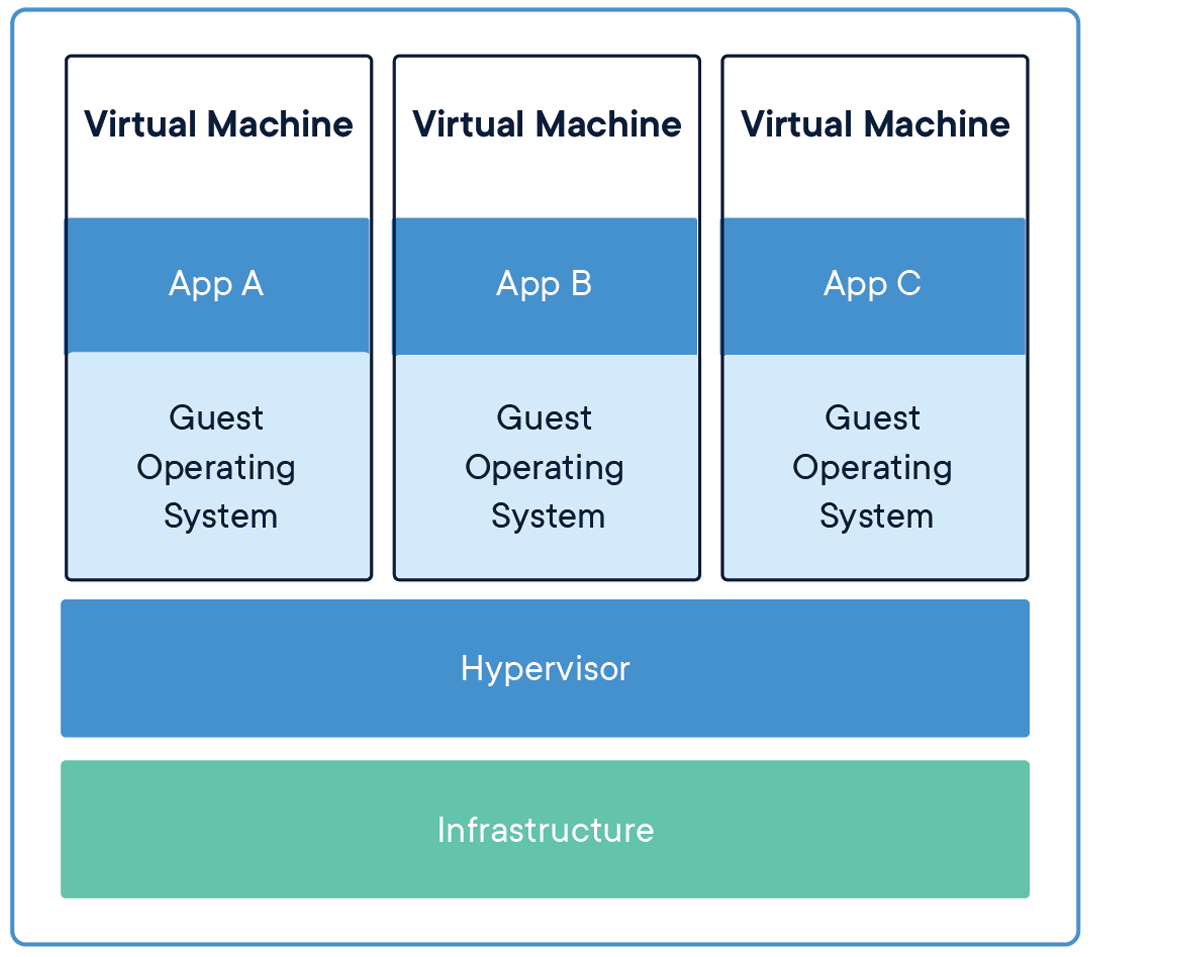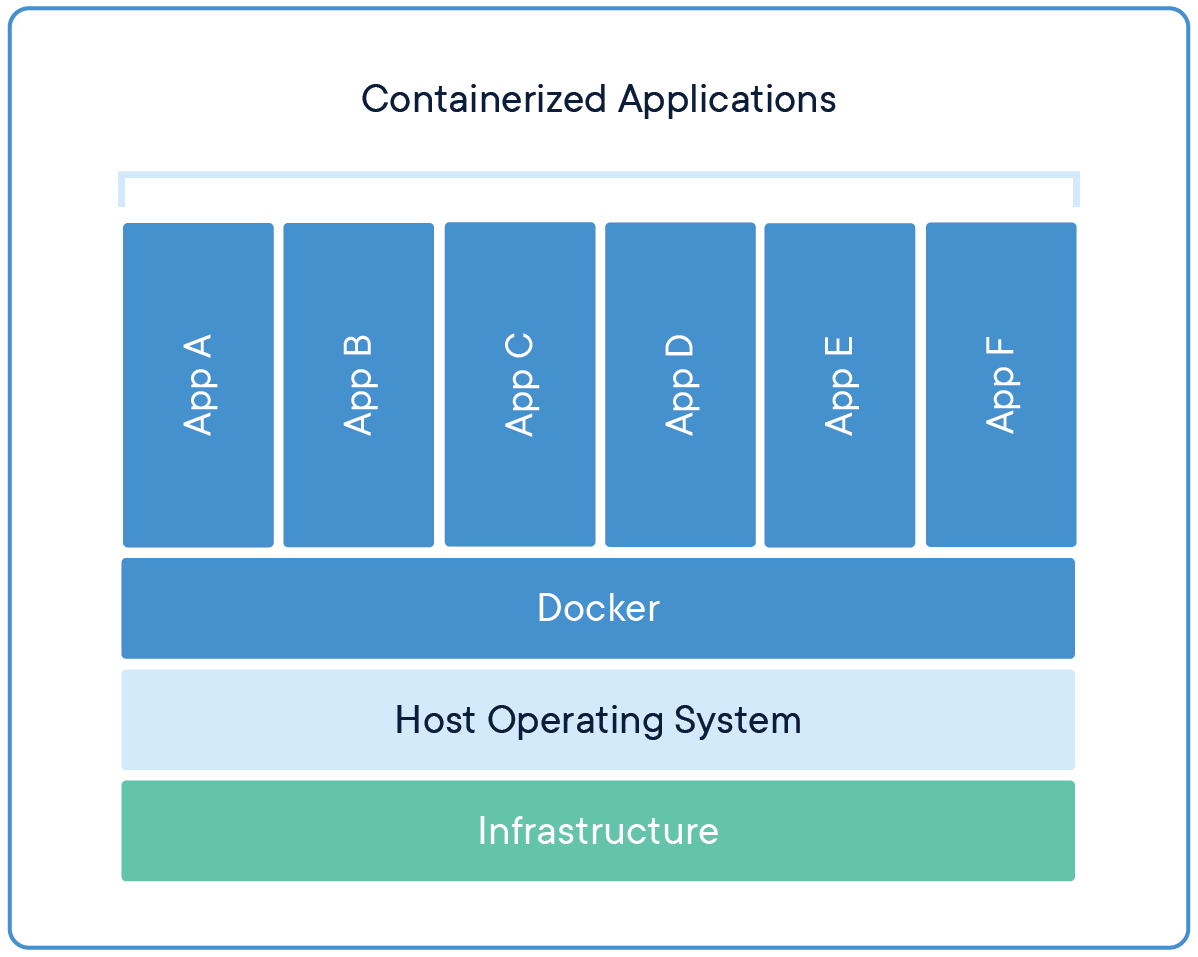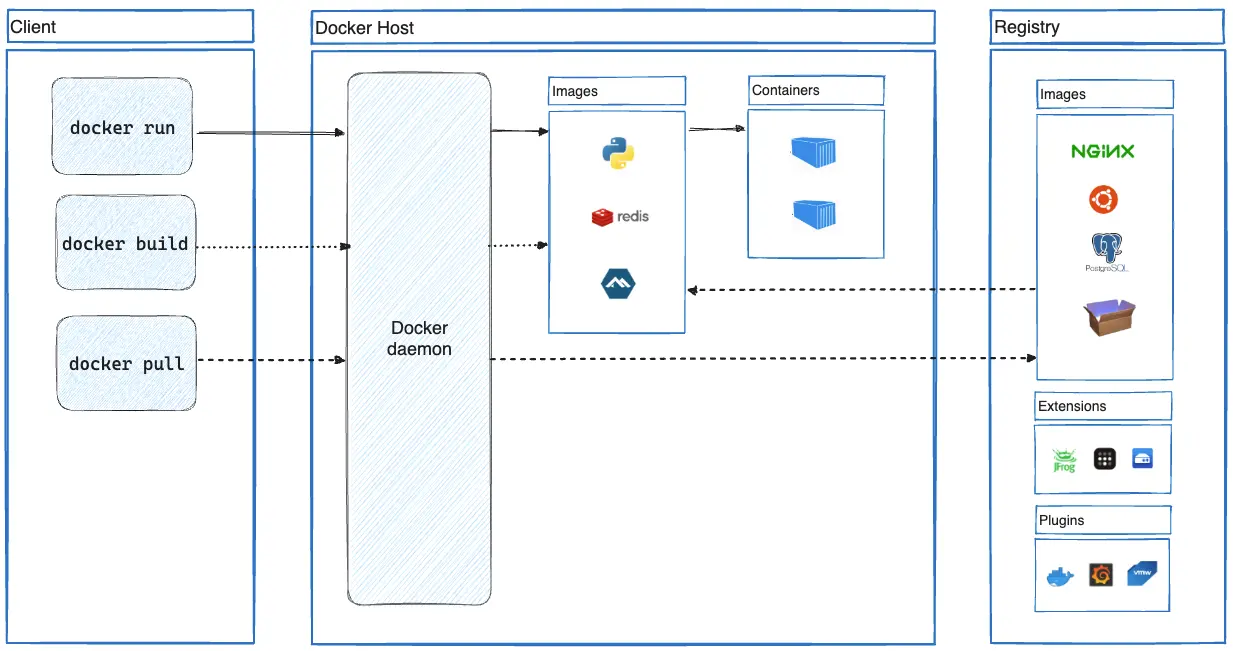Getting Started with Docker: A Guide for Absolute Beginners
 Arief Shaik
Arief Shaik
What is Docker?
Docker is an open platform for developing, shipping, and running applications. Docker enables you to separate your applications from your infrastructure so you can deliver software quickly. With Docker, you can manage your infrastructure in the same ways you manage your applications. By taking advantage of Docker's methodologies for shipping, testing, and deploying code, you can significantly reduce the delay between writing code and running it in production.
Before Docker :
Before Docker, deploying software was often a nightmare. Developers would face issues like:
Dependency conflicts
Environment mismatches ("It works on my machine")
Heavyweight virtual machines
Virtual machines helped to an extent, but they came with their own challenges — high resource usage and slower boot times.
Containers versus virtual machines (VMs):
Without getting too deep, a VM is an entire operating system with its own kernel, hardware drivers, programs, and applications. Spinning up a VM only to isolate a single application is a lot of overhead.

A container is simply an isolated process with all of the files it needs to run. If you run multiple containers, they all share the same kernel, allowing you to run more applications on less infrastructure.

Installing Docker:
Docker can be installed on all major operating systems.
https://www.docker.com/
you can go to the above link and download docker according to your operating system.
Docker architecture

Docker uses a client-server architecture. The Docker client talks to the Docker daemon, which does the heavy lifting of building, running, and distributing your Docker containers. The Docker client and daemon can run on the same system, or you can connect a Docker client to a remote Docker daemon. The Docker client and daemon communicate using a REST API, over UNIX sockets or a network interface. Another Docker client is Docker Compose, that lets you work with applications consisting of a set of containers.
The Docker daemon
The Docker daemon (dockerd) listens for Docker API requests and manages Docker objects such as images, containers, networks, and volumes. A daemon can also communicate with other daemons to manage Docker services.
The Docker client
The Docker client (docker) is the primary way that many Docker users interact with Docker. When you use commands such as docker run, the client sends these commands to dockerd, which carries them out. The docker command uses the Docker API. The Docker client can communicate with more than one daemon.
Docker Desktop
Docker Desktop is an easy-to-install application for your Mac, Windows or Linux environment that enables you to build and share containerized applications and microservices.
Docker registries
A Docker registry stores Docker images. Docker Hub is a public registry that anyone can use, and Docker looks for images on Docker Hub by default. You can even run your own private registry.
Core Docker Concepts:
Images
Images are read-only templates used to create Docker containers. They contain the application code, runtime, libraries, and all necessary dependencies. Think of them like a recipe that defines how your app should run.
Containers
A container is a running instance of an image, executing the application in an isolated environment. It includes everything needed to run the app and can be started, stopped, or deleted independently. Think of it as the meal created from a recipe.
Dockerfile
A Dockerfile is a text-based script containing instructions to build a Docker image. It defines the base image, working directory, files to copy, commands to run, and how the application should start. It automates the entire image creation process.
Docker Hub
Docker Hub is a cloud-based registry where Docker users can find and share container images. It hosts official images (like node, nginx, python) and lets developers push and pull custom images. It's like GitHub, but for Docker images.
Volumes
Volumes are used to store data persistently outside of the container's filesystem. Even if the container is deleted, the data inside a volume remains intact. This is essential for databases or apps needing long-term storage.
Networks
Docker networks enable communication between containers, allowing them to work together as a system. They provide isolated environments with customizable connectivity and security. Useful in multi-container apps like web + database stacks.
Basic Structure of a Dockerfile
A Dockerfile is made up of a sequence of instructions that tell Docker how to construct an image. Here's the typical structure, in order of appearance:
1. FROM – Base Image
FROM python:3.9
This specifies the base image your image is built on.
It’s like saying “start from a ready-made setup that already has Python 3.9 installed.”
Common base images:
ubuntu,alpine,node,python,nginx
2. WORKDIR – Working Directory
WORKDIR /app
Sets the working directory inside the container.
All subsequent commands like
COPY,RUN,CMD, etc., will be run from this directory.
3. COPY – Copy Files
COPY . /app
Copies files from your local directory (
.) into the container’s file system.In this case, it places everything in the
/appdirectory inside the container.
4. RUN – Execute Commands
RUN pip install -r requirements.txt
Executes commands during the image build process.
Commonly used to install dependencies, compile code, or update packages.
Each
RUNcreates a new layer in the image.
5. CMD – Default Command to Run
CMD ["python", "app.py"]
Specifies the default command the container should run when started.
Only one
CMDis allowed; if multiple are specified, only the last one is used.Use exec form (
["executable", "arg1", "arg2"]) for best practices.
ENTRYPOINT– LikeCMD, but used when you want the container to always run a specific command. Often used withCMDto allow argument overrides.
Execution Flow
Docker reads the Dockerfile from top to bottom.
Each instruction creates a layer (cached for faster rebuilds).
At the end, you get a Docker image you can run as a container.
FROM python:3.9
WORKDIR /app
COPY . /app
RUN pip install -r requirements.txt
EXPOSE 5000
CMD ["python", "app.py"]
Build the Image
Open a terminal in the directory containing your Dockerfile and run:
docker build -t my-python-app .
-t my-python-appgives your image a name (my-python-app).tells Docker to use the current directory (where the Dockerfile is) as the build context
To confirm it’s built:
docker images
You’ll see your image listed like this:
TAG IMAGE ID CREATED SIZE
my-python-app latest abc123def456 10 seconds ago 125MB
How to Run a Docker Container
Once the image is built, run it using:
docker run my-python-app
If your app runs a service (like a web app), you’ll likely need to map ports:
docker run -p 5000:5000 my-python-app
-p 5000:5000maps host port 5000 to container port 5000
This builds an image for a Python app with dependencies and exposes port 5000.
Useful Docker Commands
| Command | Description |
docker ps | Lists running containers |
docker ps -a | Lists all containers (including stopped) |
docker stop <container_id> | Stops a running container |
docker rm <container_id> | Deletes a stopped container |
docker rmi <image_id> | Deletes an image |
docker exec -it <container_id> bash | Opens an interactive shell in the container |
docker logs <container_id> | Shows logs from a container |
Run in Detached Mode (in Background)
docker run -d -p 5000:5000 my-python-app
-dmeans detached — the container runs in the background
Docker Volumes: Persistent Storage
What is a Volume?
A volume is Docker’s way of persisting data outside of a container’s lifecycle. This means your data won’t be lost when the container stops or is deleted.
How to Create a Volume
docker volume create mydata
- This creates a volume named
mydata.
List Volumes
docker volume ls
Remove a Volume
docker volume rm mydata
Use a Volume in a Container
docker run -d \
-v mydata:/app/data \
--name volume-demo \
my-python-app
-v mydata:/app/data: Mounts the volume inside the container at/app/dataData written to
/app/datawill be saved in themydatavolume, even if the container is removed
View Volume Mounts in a Running Container
docker inspect volume-demo
Useful Docker Commands
| Feature | Command | Description |
| Create | docker volume create myvol | Creates a new named volume myvol |
| List | docker volume ls | Lists all volumes |
| Inspect | docker volume inspect myvol | Shows detailed info about a volume |
| Use in run | -v myvol:/path/in/container | Mounts a volume inside a container |
| Anonymous | -v /path/in/container | Creates and mounts an unnamed volume |
| Remove | docker volume rm myvol | Deletes a specific volume |
| Prune | docker volume prune | Deletes all unused volumes |
Docker Networks: Container Communication
What is a Network?
Docker networks allow containers to communicate with each other securely and flexibly — especially useful in multi-container setups like microservices.
Create a Docker Network
docker network create mynetwork
- This creates a user-defined bridge network named
mynetwork
List Networks
docker network ls
Remove a Network
docker network rm mynetwork
Connect Containers to a Network
docker run -d --name app1 --network mynetwork my-python-app
docker run -d --name app2 --network mynetwork my-other-app
- Both
app1andapp2can now talk to each other by container name (e.g.,http://app2fromapp1)
Connect an Existing Container to a Network
docker network connect mynetwork volume-demo
Inspect a Network
docker network inspect mynetwork
Example: Volume + Network + Run
docker volume create myvolume
docker network create mynetwork
docker run -d \
-v myvolume:/app/data \
--network mynetwork \
--name mycontainer \
my-python-app
Useful Docker Commands
| Feature | Command | Description |
| Create | docker network create mynet | Creates a new custom bridge network |
| List | docker network ls | Lists all Docker networks |
| Inspect | docker network inspect mynet | Displays detailed info about the network |
| Use in run | --network mynet | Connects a container to a specific network |
| Connect | docker network connect mynet container | Connects a running container to a network |
| Disconnect | docker network disconnect mynet container | Disconnects a container from a network |
| Remove | docker network rm mynet | Deletes a specific network |
| Prune | docker network prune | Deletes all unused networks |
Resources
Subscribe to my newsletter
Read articles from Arief Shaik directly inside your inbox. Subscribe to the newsletter, and don't miss out.
Written by

Arief Shaik
Arief Shaik
I’m a passionate DevOps and cloud enthusiast with hands-on experience in building and automating modern infrastructure using tools like Docker, Terraform, Jenkins, and GitHub Actions. My core skill set includes Java, Python, shell scripting, and deploying containerized applications on Azure and AWS. I actively work on real-world projects involving CI/CD, infrastructure as code, cloud deployment, and Linux automation. Driven by curiosity and consistency, I enjoy turning complex problems into simple, automated solutions. I’m always exploring new technologies and looking to contribute to open-source projects and collaborate with the developer community.